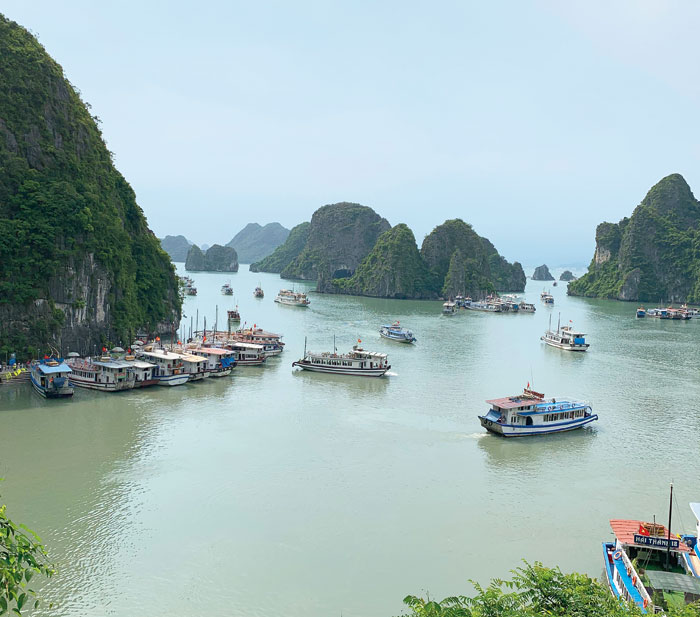A solo trip to “find oneself” can well be mistaken for a millennial rite of passage for the fast-growing young populace who are increasingly indulging in this ‘soul-searching’ activity.
At the helm of this change is social media, with platforms like Instagram contributing to the growth of the business of tourism. There are curated packages that can be bought online where a designated guide-cum-photographer will spend two-three hours with you, taking you to picturesque spots to click your photographs!
I decided to follow this routine path (minus the posing) and celebrate my birthday by myself in Vietnam, backpacking from the north to the south of the country.
Why Vietnam? The affordability factor and the War Remnants Museum were the two driving forces behind the choice of country. It is my misfortune that I feel safer in an unknown country than I do in my own, but it wasn’t an unfounded thought as it got reiterated multiple times by fellow solo-travellers of various nationalities that I met on this journey.
But first things first, if you are planning to visit a country, don’t ask someone who has recently returned from a trip there things like ‘Where should I go?’ and ‘What should I do there?’. There might be four other things that they did not do which might appeal to you more. Ask them about the people and ‘things to keep in mind’ while travelling.
Ask them what they did, where they went and what they ate and judge for yourself what interests you. Then, dive deep into the Internet and search, search and then search some more. After putting a dent on the Internet with the consumption of content available there, I can safely say there isn’t any piece of information that you would not find there.
Websites like TripAdvisor are plenty as are blogs which all give first-hand accounts of people and their reviews of a place. See the kind of tours that are being offered to get an idea of the things to do in a particular city. Some websites even curate a precise things-to-do list based on your duration of travel.
And after all of that, there is always the quintessential Lonely Planet. It may appear to be a rookie act of disillusion in this updated world of technology, but, honestly, I couldn’t get enough of it, before and during my travel.

A farmer in a conical hat in a lush green field is the quintessential image of Vietnam Shrestha Saha
Arrival: 11am, Noi Bai International Airport, Hanoi
I landed in the capital of the country at 11 in the morning and waited patiently for “an orange colour bus” (no. 86), which, I had learnt, was the cheapest, most comfortable mode of transport to the Old Quarter.
Old Quarter in Hanoi is a city of bustling lanes of systemic disarray. I found a group of ladies casually practicing salsa by Hoan Kiem Lake, a man dancing to what could only be called the Vietnam-equivalent of Bollywood with two puppets, men of all ages playing a badminton-ish game using their legs as racquets, a group of musicians with plugged-in instruments playing on the road, and a street lit up in the night with party-seekers living their best night-life.
Hanoi is a pulsating place and there is vibrancy in every corner. But the city also doubles as the starting point for exploring many different terrains north of it. If you decide to drop in at the night market, make sure bargaining is your second name. Colourful printed shirts, beach-worthy skirts, shoes, coffee, fruits, party props, home decor items — you name it and Hanoi night market has it!
A well-spent day in Halong Bay
A three hour drive from the Old Quarter takes you to Halong Bay. There are thousands of cruises on offer and it is advisable to choose for yourself after looking through pictures and speaking to various service providers. From a day-long tour to two nights on a cruise, choose wisely depending on whether you just want to see the Unesco heritage sight, or relax and practise some tai chi on the deck too.
Day-long cruises range from $45 to $60. The stalactite and stalagmite caves are awe-inspiring but you can give the Ti Top Beach a miss solely because of the crowd present.
Learning to make rice paper rolls with a beer in hand under the open skies while sailing on the sea is an exhilarating experience.
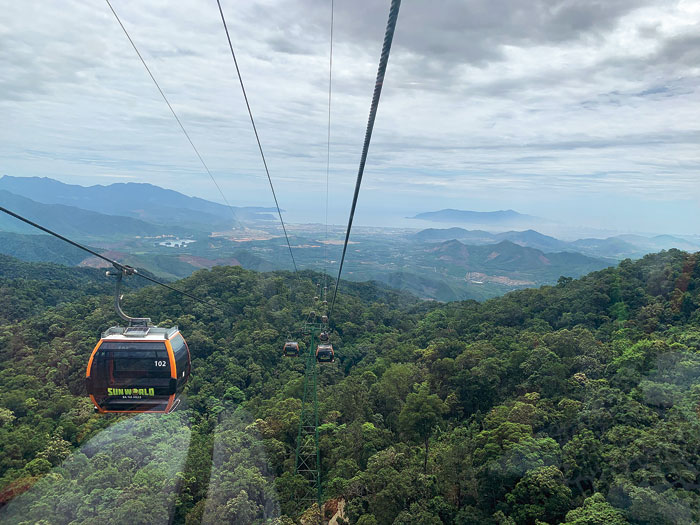
The cable car ride up to the top of the hill is a 20-minute-long one that covers 25km and goes up to 15,000ft above the ground Shrestha Saha
Rolling into Da Nang
Da Nang is a city so new that the paint hasn’t dried yet on most of its high-rises. If it weren’t for the towering Ba Na Hills rising up around the city, one could easily have mistaken it for Delhi NCR’s industrial hub Gurgaon.
Tucked in nooks and corners of the city are historical sights like the Marble Mountain and the My Son Temple that deserve a visit. However, one of the most fun ways of spending a day here is to go to Sun World in Ba Na Hills, home to a quirky bridge in the sky, held up with two concrete hands.
Taking an overnight sleeper bus from Hanoi, I arrived in Da Nang with the aim of spending a day there before moving on further. Sleeper buses, always at the receiving end of wrath on the Internet, are actually a fun and comfortable way to travel.
Sun World is an amusement park with a recreational resort! Think Disney World with lesser rides but similar levels of energy. The cable car ride up to the top of the hill is a 20-minute-long one that covers 25km and goes up to 15,000ft above the ground.
While the numbers don’t mean much when you are sitting with five other people in those glass cable cars looking down at the entire city below you, they tend to appear enormous when you are alone in it and it stalls for a few minutes (heart-stopping minutes as experienced by yours truly).
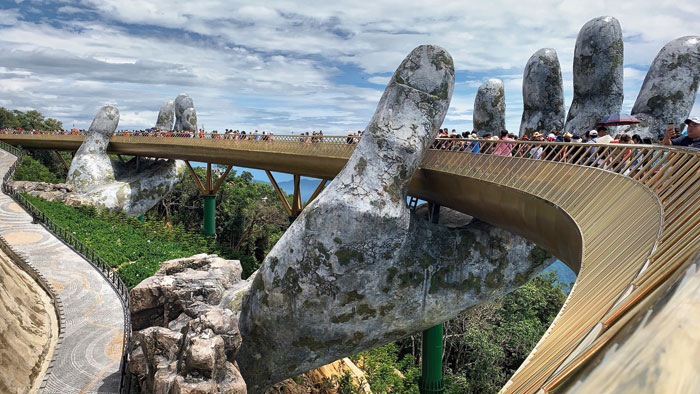
The quirky bridge in the sky at Sun World in the Ba Na Hills of Da Nang is held up by two concrete hands Shrestha Saha
Sun World is replete with castles and majestic Buddha statues on a mountain top. Exotic dancers, live music and rides on an electric train through faux-French villages and more will keep you entertained! It definitely is a must-visit spot around town, especially if you are travelling with kids.
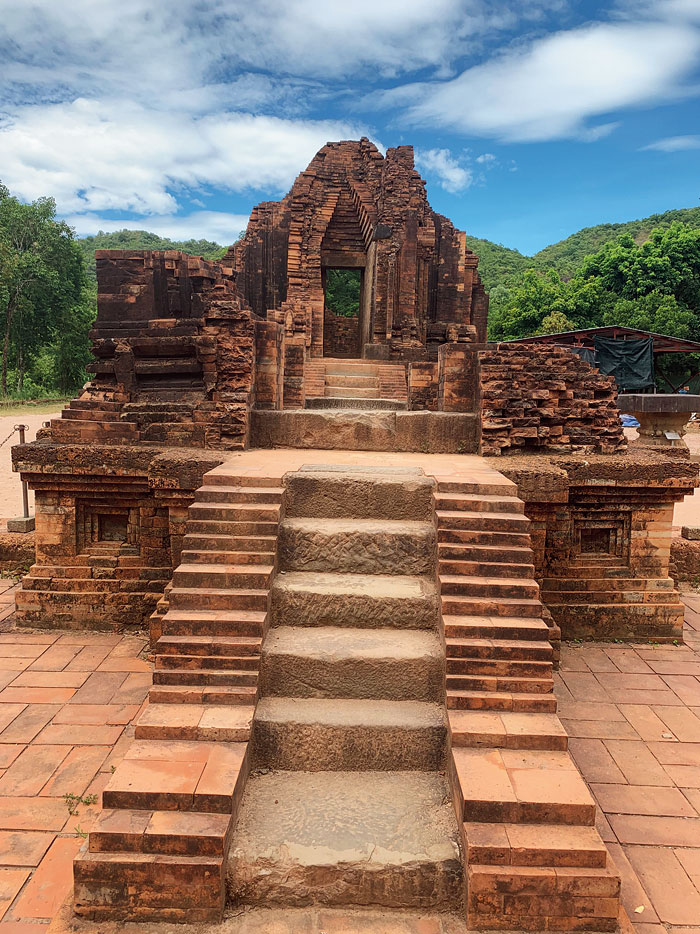
Although in ruins and with craters made by bombs left unfilled, the My Son Temple is still an imposing sight Shrestha Saha
The grand My Son Temple
The ride from Ba Na Hills to My Son temple takes all of two-and-a-half hours. In ruins, with craters formed from bombs dropped, My Son temple is grandeur redefined, surrounded by hills on all sides. A pleasant surprise welcoming you at the gate is a board that reveals the management of the site by Archaeological Survey of India in association with the Vietnam government.
The Shiva temple with its stellar brickwork is mildly reminiscent of the architecture in Bishnupur. Lush green pathways take you from one part of the site to the other and if you are lucky, you may even catch a dance show at the gallery there.
Perched precariously on the back of an EasyRider (guides who show you around the city on bikes), I grinned my way around the city as my driver kindly ventured through forests and farms on our way back to give me a taste of village life in Vietnam.

Randy’s Book Exchange in Hoi An is a unique experience and reader’s delight Shrestha Saha
Hoi An: An abode of peace and vibrancy
Home to the most beautiful sights on the trip, Hoi An is a little village tucked 30km away from the city of Da Nang, where I spent the most number of nights of my trip. The idea was to just sit and watch life go by while feverishly hoping for divine inspiration that would help me write. By the Thuo Bon river, the village of lanterns with the Ao Nang Sea beach just 6km away, Hoi An comes alive at night in rainbow colours. The best way to explore this village is on a bicycle, which you can easily rent from your accommodation for $2 a day.
Haven for couture-conscious tourists, Hoi An has slowly emerged as the fashion capital of the country, for its ability to replicate any piece of clothing that you show a picture of. You can spot tourists holding up pictures from fashion weeks around the world to tailors who will help you choose the fabric and replicate the same piece for a minimal amount. With their turnaround time being as low as two days, this is a blessing for tourists travelling for a short period of time. I am not getting into the ethical issue of plagiarism here; that’s for another day.
Sit by the river in Old Town and watch the lantern-lit boats sailing on joy rides with tourists aboard. Choose from a plethora of food options — Anthony Bourdain-approved Banh Mi or fried seafood from the street stalls. Sit at The Noodle House in the market and get the best, most unobstructed view of the river — and the mountains beyond it.
Do check out Randy’s Book Exchange (easily located on Google maps) — a small house belonging to an old German gentleman Randy who fell in love with Vietnam and never went back. His residence houses thousands of books and cosy reading nooks. Pay in currency or in books and pick up some rare classics as well as newer titles. I sat in the comfort of a green armchair and read for hours, while listening to Randy blast some jazz on his speakers downstairs.
Ao Nang is a serene beach with the usual hoard of shacks, sellers of trinkets and adventure sport enthusiasts. Shacks are aplenty but it is Cu Gio Chau’s clam porridge for about $1 on the street leading up to the main entrance of the beach, that stole my heart. People are known to travel from far and wide for a bowl of porridge.
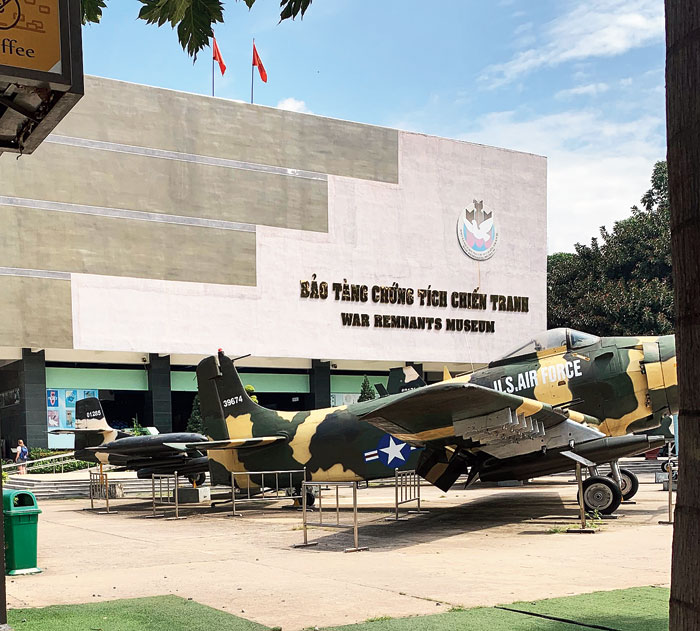
The War Remnants Museum in the heart of the city Shrestha Saha
Haywire in Ho Chi Minh City
I was prepared to face an exuberant city life in Ho Chi Minh City (previously known as Saigon), as I had been warned by travellers before me. My main agenda to stop at the city which can well be given a miss otherwise, was the War Remnants Museum in the heart of the city. However, my curated plan went haywire in a pleasant way because of a stray post on social media. Sometimes one must acknowledge the miracles that happen on these platforms.
A story on Instagram led an old friend back in Delhi to find out about my trip and, subsequently, connect me to his old friend in Vietnam — Joycee. English language and the country’s resistance to it till recent times, is Vietnam’s biggest problem, especially for a country which leans on tourism for GDP. It is now that realisation has struck and English coaching centres are springing up everywhere, a dime a dozen, especially in Ho Chi Minh City. Joycee is a Manipuri woman who’s realising her vision and dream of making global citizens of kids in a village, an hour-and-a-half away from the city.
Charging a nominal amount of money, she and her husband run an after-school programme for people of all ages, while slowly striving towards realising their dream of having their own school for the kids. I was warmly welcomed into their homes and lives as I volunteered to teach English and interact with kids for a day. Open to all, Joycee invites volunteers from all around the world who can live in their humble abode and teach for as long as they want. If giving back and experiencing the culture of a country at its rawest is something that appeals to you, you must go and spend some time in this little province of Vietnam.

The War Remnants Museum is enough to shake one out of their complacence Shrestha Saha
The War Remnants Museum
I watched a 25-year-old American girl break down on the second floor of the War Remnants Museum as she realised that she has been brought up on a lie which narrowed the horror of the Vietnam war to a mere three years in her history books. The unimaginable atrocities is severely downplayed in books and, sometimes, even in the minds of the generations of Vietnamese who hail from North Vietnam and had parents and grandparents who fought with the Americans.
Association with Viet Cong is met with raised eyebrows and the War Remnants Museum is universally considered a ‘political piece of narrative’ throughout the country. However, the truth is scary and one might exhaust their emotional bandwidth trying to explore all the walls of this place. From pictures of kids affected by Agent Orange (a chemical used in warfare by the US) to stillborn fetuses on display, the horror of the war takes a while to recover from.
There is a section where art pieces are being sold to visitors by adults who were affected by Agent Orange when they were kids. Expect some live music and donate if your heart suggests. Take a day for the museum tour, of which you will perhaps only take a couple of hours to explore the actual museum. It is the emotional labour that follows the visit that takes up a longer time.
If you wish to grasp the enormity of the war in its entirety, visit the Cu Chi tunnels on the same day. Sit at the city centre and watch people passing by as you try and calm yourself while saying “it’s over now”. That’s what I did.
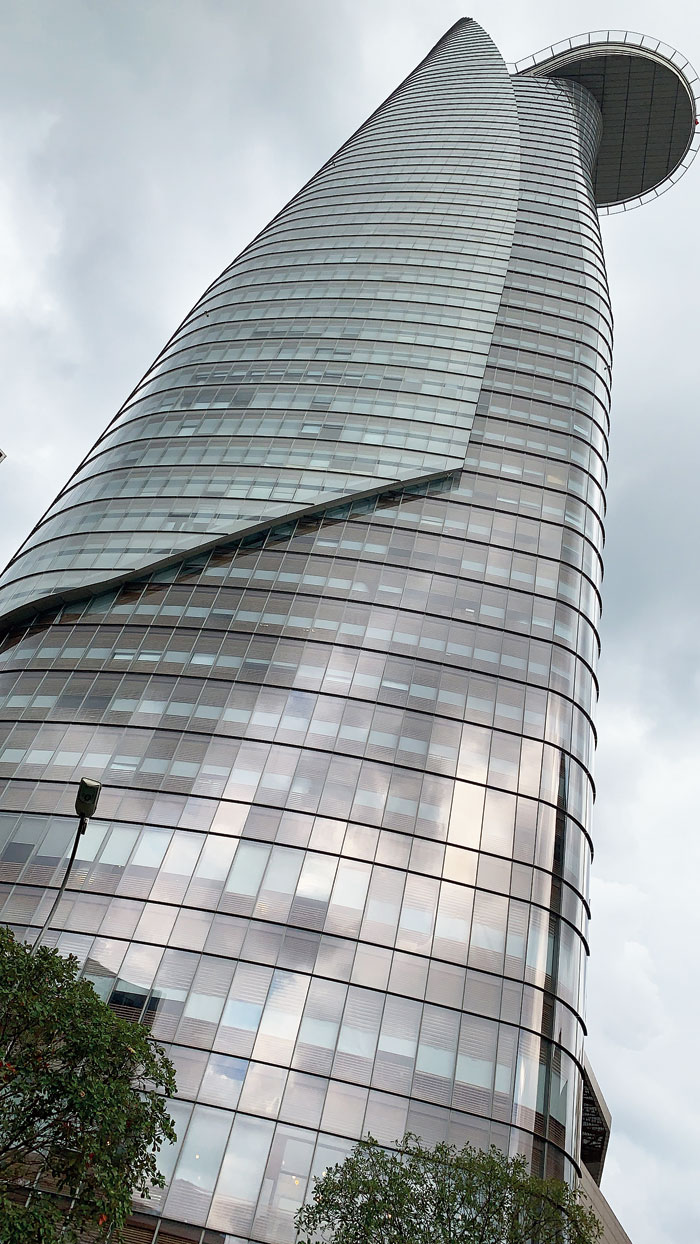
At Bitexco Financial Tower, the lift takes 37 seconds to reach the 60th floor Shrestha Saha
The Saigon swing
Copious amounts of gin and tonic later, I decided to explore the city life at night. My first stop was the Bitexco Financial Tower, which offers a bird’s-eye view of the city from it’s 38th floor sky deck. The Saigon river on one side and the bustling city on the other, this view in the rain is liberating for a solo traveller.
What makes this trip even more exciting is the Heineken tour on the 60th floor. On a short tour of 45 minutes, learn about the brewery and what goes into brewing one of the most popular beers around the world. Watch a VR show and learn how to correctly pour beer in a glass. Play games and take some pictures and enjoy complimentary pints which I sipped on sitting on the 58th floor of the building!
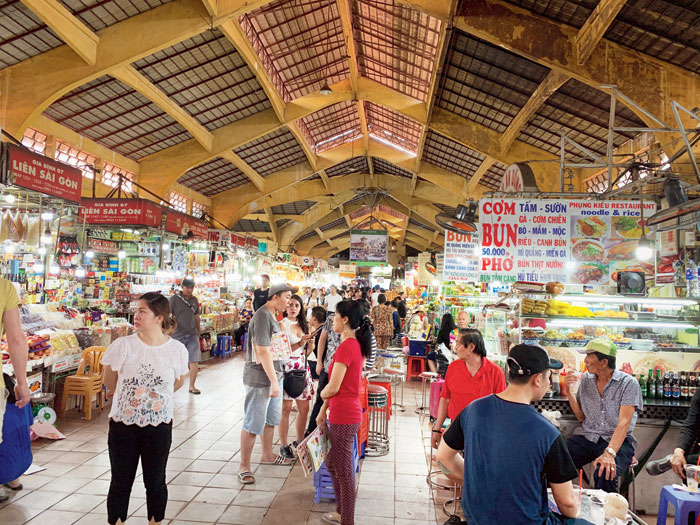
Benh Thanh market is home to souvenirs, food, decor items and scams (if one is not careful with their money!) Shrestha Saha
When in Saigon, one must visit the Ben Thanh market, ready to bargain like your life depended on it. The bustling market is much like our New Market with everything under the sun being sold there. My backpack went from heavy to it-will-tip-you-over just because of the amount of coffee purchased from Ben Thanh market. One can also pick up souvenirs and fashionable pieces of jewellery from here.
The last leg of my trip was when I decided to let my hair down and party a little. With four newly minted friends from my hostel, we set off for Bui Vien street at night to get a few drinks. The walking street of Ho Chi Minh, with every building housing a bar of a different flavour, the lights are blinding and yet enticing. We danced the night away not realising when it was 5am!
As I made my way back to the airport to eventually make my way back home, there were three realisations that are perhaps here to stay with me after this trip. First, millennials from various nationalities, hanging out together, would almost always veer towards a conversation that is about world politics. Second, travelling solo is nothing like Julia Roberts in a flowing gown in the arms of Javier Bardem, in Bali, as in the film Eat, Pray, Love, but it is about figuring out what your heart wants when left completely alone in a land where no one speaks your language. Third, being careful while being open to newer experiences is a challenge that everyone must muster the courage to face someday. Preferably, in Vietnam!

